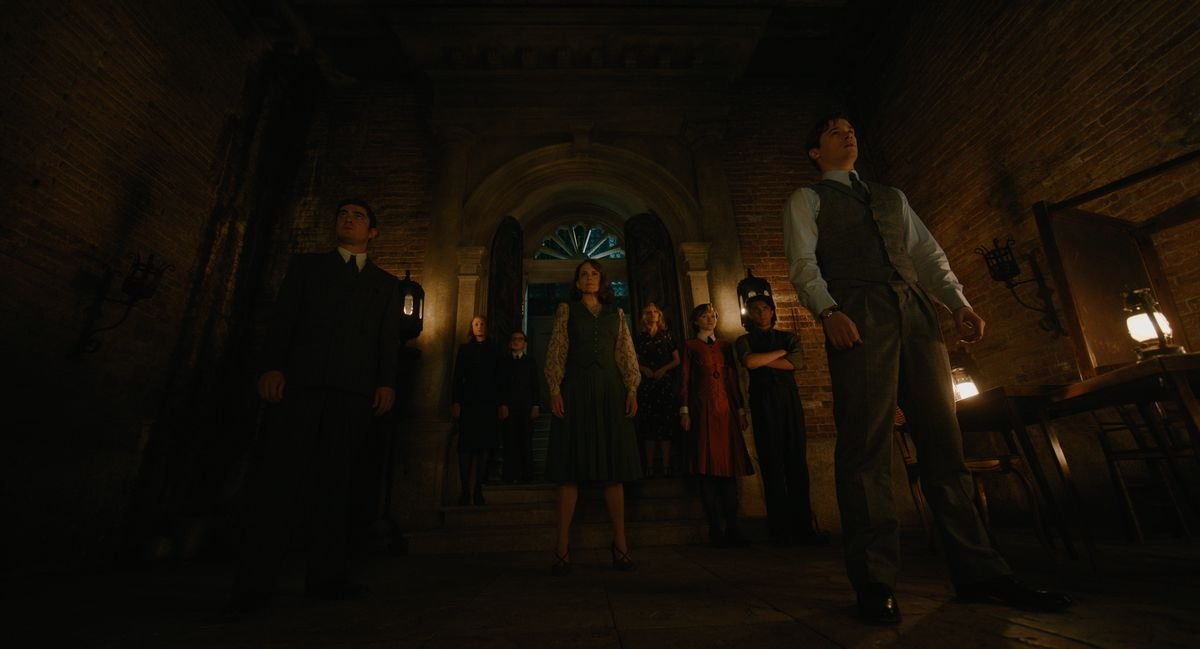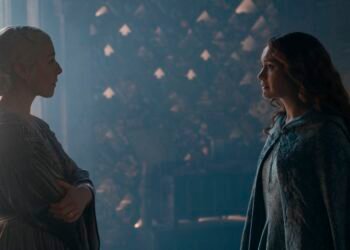Actor-director Kenneth Branagh is clearly having the best time with his Hercule Poirot movies. The latest, A Haunting in Venice, marks Branagh and screenwriter Michael Green’s third take on Agatha Christie’s iconic detective, after 2017’s Murder on the Orient Express and 2022’s Death on the Nile. It’s also the loosest adaptation of the three of them by far. In the new movie, Branagh breaks all the adaptation rules. He smashes genres together. He goes fully over the top, which is exactly the direction that his Christie adaptations have been rolling toward. Branagh finally breaks free, making A Haunting in Venice the best entry in the series to date.
[Ed. note: This post contains light setup spoilers for A Haunting in Venice.]

Image: 20th Century Studios
A Haunting in Venice is technically based on Christie’s 1969 novel Hallowe’en Party, in that it takes place on Halloween during a party hosted by someone named Rowena Drake, where character named Joyce Reynolds is killed, leading famed Belgian detective Hercule Poirot to swoop in and solve the murder. But Branagh takes endless creative liberties, transforming the story from whodunit to Gothic horror.
Now the Halloween party doesn’t take place in a small English town; it’s in a crumbling Venetian palazzo. Also, regular Englishwoman Rowena Drake (True Detective’s Kelly Reilly) is now a glamorous, fading opera star who wants to host a seance to communicate with her dead daughter, who she claims was killed by ghosts. And perhaps most importantly, Joyce Reynolds is no longer a precocious 13-year-old but an adult psychic who claims she can communicate with the dead. (She’s also played by Michelle Yeoh.) The question of whether ghosts and hauntings are real plays a big part in this movie. It’s less of an adaptation and more like Branagh and Green turning a lesser-known Christie novel into a Scooby-Doo-like haunted house mystery.
This is not a bad thing. It’s absolutely where Branagh’s Poirot movies have been leading. As a director, Branagh has infamously indulged in the over-the-top nature of his Christie movies’ settings — the cramped yet indulgent train cars in Murder on the Orient Express, the luxurious steamboat cruising through the lush backdrops of the Nile. A lot of the tone is exaggerated and heightened. But that’s generally been the vibe of these movies, from the way they’re directed to the way Branagh plays up Poirot’s cartoonier elements. (I will never forget the fact that he gave Poirot’s elaborate mustache an overly tragic backstory in the opening of Death on the Nile.)

Image: 20th Century Studios
For this haunted house story, Branagh ups the stakes on a straightforward murder mystery by mixing in the question of whether the paranormal exists. He does it by turning the setting into a character. This isn’t just a typical Gothic manor; no, it’s a claustrophobic Venetian manor, with long, narrow hallways that lead to false entrances, windy balconies with views that plummet to the ground, and iron gates that emphasize that the partygoers are all trapped here.
The place also has a sinister backstory, a curse that has something to do with dead orphans and a plague, which gives Branagh an easy excuse to insert creepy children’s songs, childlike laughter, and plague doctor masks. The partygoers are trapped in the house due to a relentless rainstorm, because naturally, a dark and stormy night is the perfect weather for a murder. The eerie thumping of the docked gondolas as the waves pound against the building’s foundation adds extra oomph.

Image: 20th Century Studios
It’s wonderfully atmospheric and creepy, made all the more so by the lingering question of whether ghosts actually exist, and whether Poirot is simply losing his marbles as he hears laughter that’s not really there and sees the figures of children reflected in mirrors. Still, he insists there must be a logical explanation for all the strange occurrences. Like the crime-solvers of the Scooby-Doo franchise’s Mystery Inc. before him, Poirot must not only solve a mystery, but also prove to a group of willing believers that ghosts don’t exist, thank you very much. (The Scooby-Doo comparison continues with the fact that this haunted Venetian manor is apparently unsellable.) Some of the jump scares are a little cheap, but the entire setting is foreboding and chilling enough without the shocks.
A Haunting in Venice cements what Branagh and Green have been trying to do with their Poirot movies. Namely, they aren’t as interested in directly adapting Agatha Christie novels as they are in using her flamboyant detective and her clever frameworks as jumping-off points for fully indulging in fun theatricality. The two most famous Christie novels are the ones that take place in specific exotic locations. Murder on the Orient Express and Death on the Nile both have satisfying, clever mysteries at their core, so adding all the extra fluff, like the garish CG sets and the ridiculous performances, detracted from the stories.
But with A Haunting in Venice, Branagh goes completely off book, and fully plunges the locked room mystery into paranormal horror. He’s turned his version of Poirot into a distinctive, peculiar character that he fully owns, then thrust him into his own lavish mysteries. Instead of leaning hard on Christie’s work (and doing it a disservice in the process), he’s running wild and setting Poirot loose.
A Haunting in Venice is out in theaters on Sept. 15.
























































